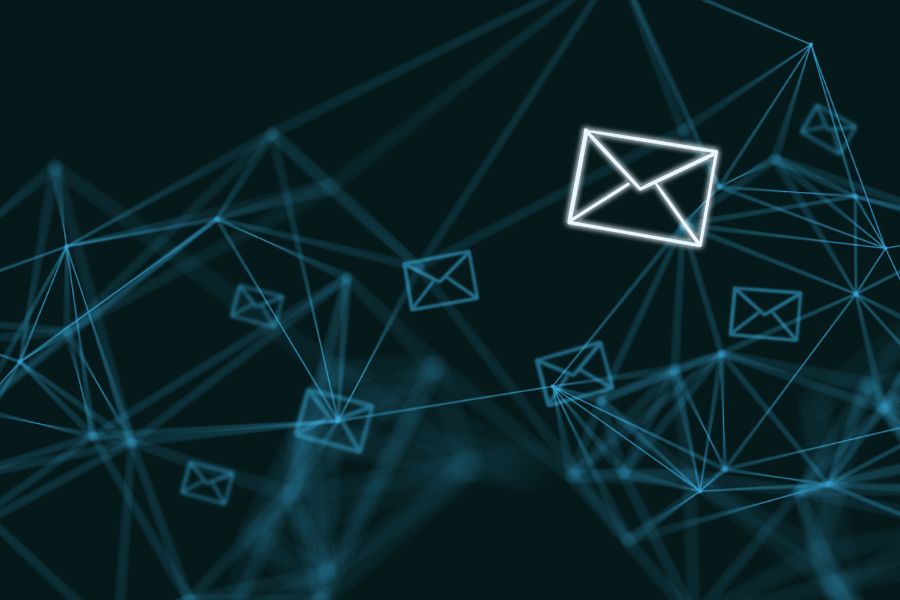Common Email Security Issues and Mistakes to Avoid in 2025
April 2, 2023, 5 min read
This blog post focuses on the potential threats to email security in 2025. In 2025, like in 2024, email will be a significant security issue or concern due to the increasing importance of internet communication. Firstly, we will explore the issues we have had in 2024 with email, then we will jump ahead and give tips on how to avoid them 2025. Cyberattacks and highly sophisticated social engineering tactics about email security will always be able to bypass even the most up-to-date anti-virus software. The book “The Art of Email Security” could be another useful reference.
What were the common email security issues in 2024?
The security issues in email are growing at an alarming rate. Cyber dangers, including whale phishing, whaling, ransomware, and others, are becoming serious problems for many organizations. As a result, companies of all sizes need to find ways to protect their email from growing threats. Email is the weakest link in the security chain because it is the starting point for over 90% of cyber attacks. In addition, a breach in security could damage a company’s or a customer’s reputation. However, a multi-layered email security process is necessary to counter hacker attempts. One problem is that security in email is not inherently safe because of how it is used.
Phishing and Spoofing
Cybercriminals engage in email spoofing when they send an email to a user pretending to be someone the recipient knows. Spoofing an email’s sender address is simple but very hard to track back to the sender.
Phishing is another risky technique to trick clients into divulging sensitive information such as bank accounts or social security numbers to cybercriminals. Cybercriminals may fortify their fakes with logos and other visual cues to make them more convincing. They manage to forge an association that reads as entirely organic, too. Nonetheless, clicking on it takes you to a phony domain. Customers should be aware of the available anti-phishing solutions because spoofing and phishing are two of the most prevalent attack strategies hackers use.
Issues with Email Privacy and Security
Misconfigurations of service providers might lead to vulnerabilities in email systems, which must be discovered. By attacking the security holes in email services, hackers get access to the system they are attacking, compromise sensitive data, and render the system unreachable.
Squatting on a Domain
Domain name squatting involves financial gain from another company’s or individual’s name or trademark. Therefore, businesses and their consumers may be at risk from domain squatting and other forms of targeted spear phishing.
On the Client Side Attacks
Every day, more and more vectors are opened up to assault Internet users. Malicious software can take over a computer with just one contaminated link. Anti-phishing measures, such as team member training and simulated email threat scenarios, should be implemented in addition to efforts to increase the security of the email service’s components.
Deleted and Dangerous Documents
In the worst-case scenario, a malicious individual might seize control of an entire network and computer system by sending malicious email attachments. Running these files via a signature-based anti-virus and behavioral analysis application is essential for a foolproof anti-phishing solution.
Crypto-Ransomware
Once infected, all encrypted data will be locked until a ransom is paid. This calls for better email support and the expectation that analytics would be able to spot and prevent ranking-related manipulations.
Errors in Configuration
The email security issues flaw is widespread. A serious problem may arise if an insecurely set-up email service allows messages to be sent and received without authentication.
If a cybercriminal has unauthorized access to your company’s email system, they may send an unsolicited email to one of your employees. An online criminal who takes on the persona of the CEO can have more success.
Kit for Exploiting Web Browsers
Identify theft, data leakage, and access issues that could result from opening emails that exploit browser flaws. The linked content could include malicious code that could be exploited. The email provider and its security features must take precautions here.
Concealment of Origin Emails and Other Forms of Targeted Social Engineering in the Workplace
An additional critical issue is that a cybercriminal can defeat any security measures by counting on the stupidity of the average user to launch an assault because ninety-seven percent of people online cannot spot a convincing phishing email. Phishing tests, quizzes, polls, and games can be used to keep users aware of potential cyber threats.
Attacks on Data Formats
In addition, file format vulnerabilities are now a significant cause of concern for many businesses’ data safety measures. Attackers who exploit these flaws can corrupt application files with malicious code (such as buffer overflows). Since these flaws commonly affect many systems, they are of paramount importance. Attackers can exploit an Adobe Acrobat file format flaw to spread malware to Windows, Mac OS X, and Linux computers with a single infected PDF file.
How to avoid these email security issues for 2025?
Multiple Email Protection Methods
Finding your company’s best email security solution is essential for reducing potential threats. Fortunately, plenty of email security software is on the market, and some are pretty effective immediately.
Instead of relying on the claims of email security providers, a business that takes a more individualized approach to its security will be safeguarded against the cyber threats to which it is most susceptible.
According to Egress’s latest report, a cybersecurity company that provides intelligent email security, 99% of cybersecurity leaders are stressed about email security.
If you’re concerned about the security of your email account or other personal data, you should now know how to spot and prevent these scams. In addition to these measures, signing up for a private and secure email service is another good way to protect your inboxes.
With the rapid increase in cyber-attacks and data breaches, email security has become a critical issue for businesses. In 2024, email security will be even more important due to the increased sophistication of hackers. Companies need to understand common email security issues and take steps to mitigate them.
To ensure that your emails stay secure, knowing what mistakes should be avoided in 2024 is essential. This includes weak passwords, insecure servers, lack of encryption, and other potential vulnerabilities. Additionally, organizations should consider investing in email security solutions such as two-factor authentication or automated filtering systems to protect their emails from being targeted by malicious actors.




























